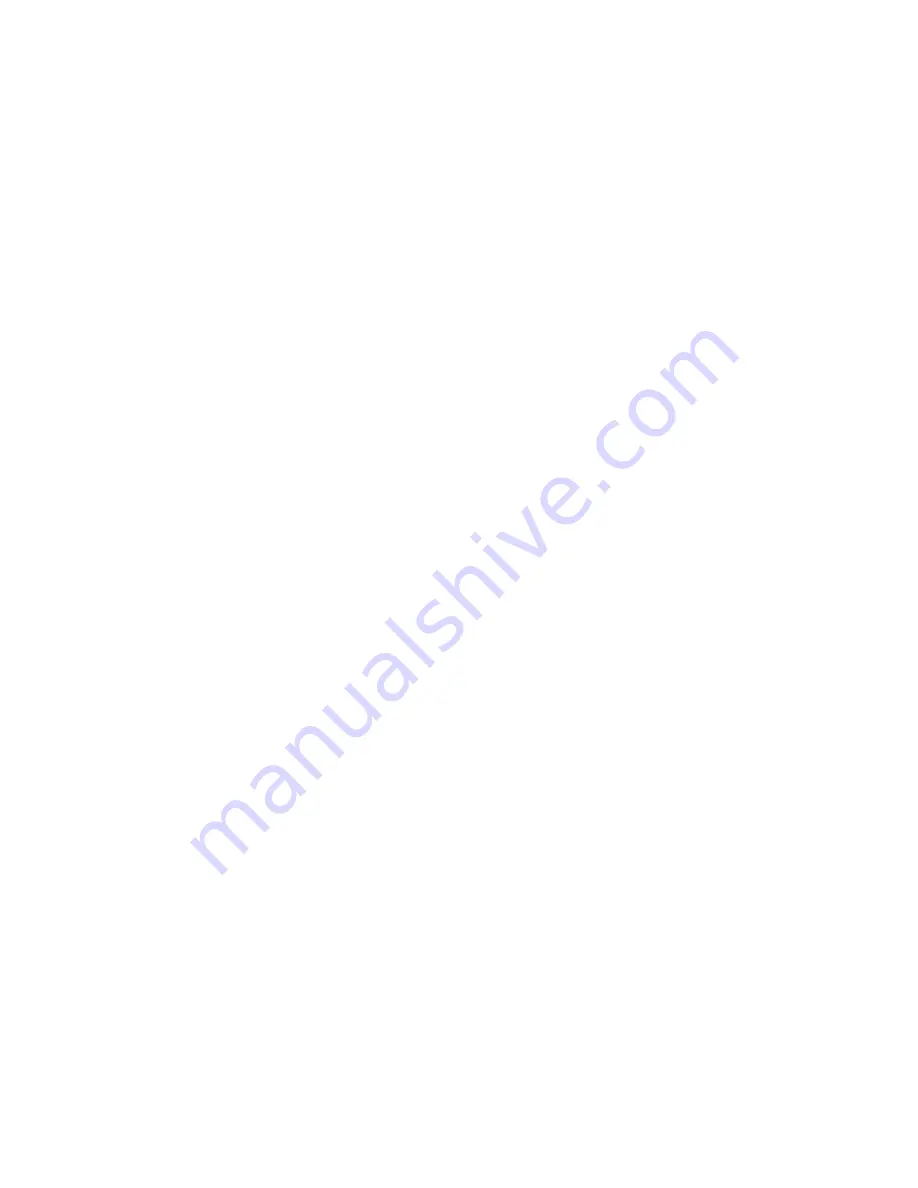
70
YORK INTERNATIONAL
*
4. Program the Dip Switches on the Microproces-
sor Board (Page 26) and verify the selection by
pressing the OPTIONS key.
Switch 3 should always be closed.
Switch 6 should always be open.
NOTE: It is IMPORTANT that all switches are properly
programmed. Otherwise, undesirable operation
will result.
*
5. Press the PROGRAM key and program each of
the 11 limits.
They are as follows:
*
Discharge Cut-out
*
Outside Air Temp Low Cut-out
*
Outside Air Temp High Cut-out
*
Discharge Pressure Unload Pressure
*
Suction Pressure Unload Pressure
*
Leaving Water Temp Cut-out
*
Suction Pressure Cut-out
*
Rate Control Temp
*
Anti Recycle Time
*
Rate Sensitivity
*
Number of Load Steps
See page 34 for assistance in programming
these values.
*
6. Program the date and time by first assuring that
the CLK jumper J18 on the Microprocessor
Board (Fig. 25) is in the ON position (Top 2
pins).
Press the SET TIME key and set the date and
time (Page 38).
*
7. Program the Daily and Holiday Start/Stop
Schedule by pressing the SET SCHEDULE/
HOLIDAY key (Page 38).
*
8. Program the Chilled Liquid Setpoint and Control
Range by pressing the CHILLED LIQUID TEMP/
RANGE key (Page 41).
*
9. If the Remote Reset is to be used, the maximum
reset must be programmed. This can be pro-
grammed by pressing the REMOTE RESET
TEMP RANGE key (Page 65).
INITIAL START-UP
After the operator has become thoroughly familiar with
the control panel and has performed the preceding
checks 24 hours prior to start-up, the unit can be put into
operation.
*
Place the System Switches to the ON position. See
the OPERATING SEQUENCE for unit operation.
*
The compressor will start and a flow of liquid should
be noted in the liquid indicator. After several minutes
of operation, the bubbles will disappear and there will
be a solid column of liquid when the unit is operating
normally. On start-up, foaming of the oil may be evi-
dent in the compressor oil sight glass. After the wa-
ter temperature has been pulled down to operating
conditions, the oil should be clear. Normal operation
of the unit is evidenced by a hot discharge line (dis-
charge superheat should not drop below 50°F). clear
oil in the compressor crankcase, solid liquid refriger-
ant in the liquid indicator and usually no more than 2
PSIG variation in suction pressure for any given set
of operating conditions.
*
Allow the compressor to run for a short time, being
ready to stop it immediately if any unusual noise or
other adverse condition should develop. When start-
ing the compressor, always make sure the oil pump
is functioning properly. Compressor oil pressure
must be as described in the SYSTEM SAFETIES
Section, page 51.
*
Check the system operating parameters. Do this by
selecting various readouts such as pressures and
temperatures. Compare these to test gauge read-
ings.
CHECKING SUPERHEAT AND SUBCOOLING
The subcooling should always be checked when charg-
ing the system with refrigerant and/or before setting the
superheat.
When the refrigerant charge is correct, there will be no
bubbles in the liquid sightglass with the system operat-
ing under full load conditions, and there will be 10°F to
15°F subcooled liquid refrigerant leaving the condenser.
An overcharged system should be guarded against. Evi-
dences of overcharge are as follows:
a. If a system is overcharged, the discharge pressure
will be higher than normal. (Normal discharge/
condensing pressure can be found in refrigerant
temperature/pressure chart; use entering air tem-
pe30°F for normal condensing tempera-
tures).
b. The temperature of the liquid refrigerant out of the
condenser should not be more than 15°F less than
the condensing temperature. (The temperature cor-
responding to the condensing pressure from refriger-
ant temperature/pressure chart).
Содержание YCAJ44HE8
Страница 16: ...16 YORK INTERNATIONAL WIRING DIAGRAMS LD02165 FIG 5 ELEMENTARY DIAGRAM...
Страница 17: ...FORM 150 60 NM3 17 YORK INTERNATIONAL FIG 5 ELEMENTARY DIAGRAM Cont d LD02166...
Страница 20: ...20 YORK INTERNATIONAL CONNECTION DIAGRAM ELECTRICAL BOX FIG 7 CONNECTION DIAGRAM LD02171...
Страница 21: ...FORM 150 60 NM3 21 YORK INTERNATIONAL FIG 7 CONNECTION DIAGRAM Cont d LD02172...






























